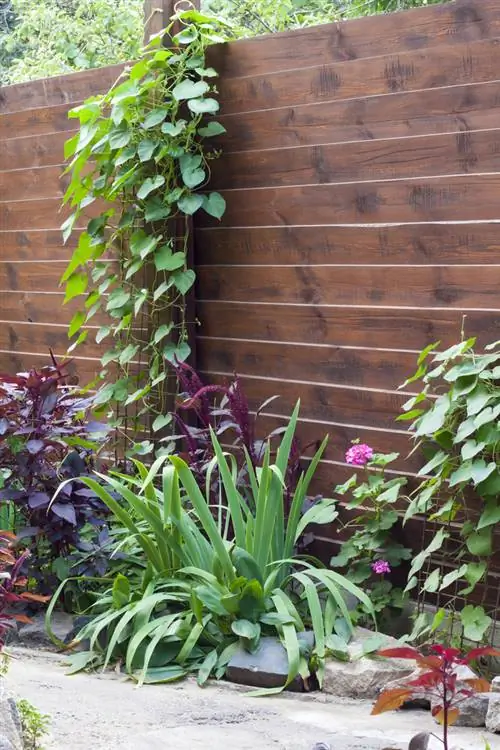- Author admin [email protected].
- Public 2023-12-16 16:46.
- Last modified 2025-01-23 11:21.
Lilac is at home in many gardens - often as a solitary plant or as part of a perennial bed. However, the fast-growing shrub is also ideal for planting as a hedge - and grows so densely that it reliably shields prying eyes on the property.

Why is lilac suitable as a privacy hedge?
Lilac is ideal as a privacy hedge because it is fast-growing, dense, easy to care for and undemanding. The attractive flowers also offer a visual highlight. For a dense lilac hedge, plant up to four plants per meter in a sunny location.
Why lilacs are wonderful as a privacy hedge
Depending on the species and variety, the shrub can grow up to four meters high and forms a dense coat of leaves that is impenetrable to the eye. In addition, lilacs bloom beautifully from around the beginning of May in a wide variety of shades of purple or pink as well as white - just by combining different colored lilacs with each other, you can achieve a fantastic visual effect during the flowering period.
Planting and caring for a lilac hedge
Furthermore, lilac is considered undemanding and easy to care for, characteristics that only reinforce its suitability for hedge planting. But be careful: the shrub was classified as invasive for good reason, as it reproduces heavily via root runners, which can appear even many meters away. Inquire about varieties that have largely abandoned this propagation method: experience has shown that many noble lilacs are included.
Location
The desired lilac hedge needs a sunny and warm location, but it does not have to be protected. In contrast to many other trees, lilac tolerates drafts and wind very well and is therefore not only ideal as a privacy screen, but also as a vestibule. However, a sunny location is an absolute must, because even in light partial shade the impressive lilac blossoms diminish significantly.
Planting
As a solitary plant, the lilac needs a fairly large planting distance, but not if you want to plant it as a hedge. In this case, plant up to four plants per meter, then the future lilac hedge will be nice and dense. Dig sufficiently large planting holes at regular intervals and enrich the excavated soil with compost and horn shavings - this gives the young lilacs the right start to grow. Don't forget to water the newly planted lilacs thoroughly.
Care
The easy-care lilac copes very well with drought and as a planted hedge only needs to be watered in long-term drought and when it is still very young and has been freshly planted. Older lilacs take care of themselves through their roots. Fertilization is carried out with compost and horn shavings twice a year: once when budding and again in early summer.
Tip
Lilacs should actually be cut after they have bloomed, but this is forbidden in hedges due to breeding birds. Therefore, cut the plants in autumn, but note that lilacs are absolutely not suitable for strict hedge trimming.






